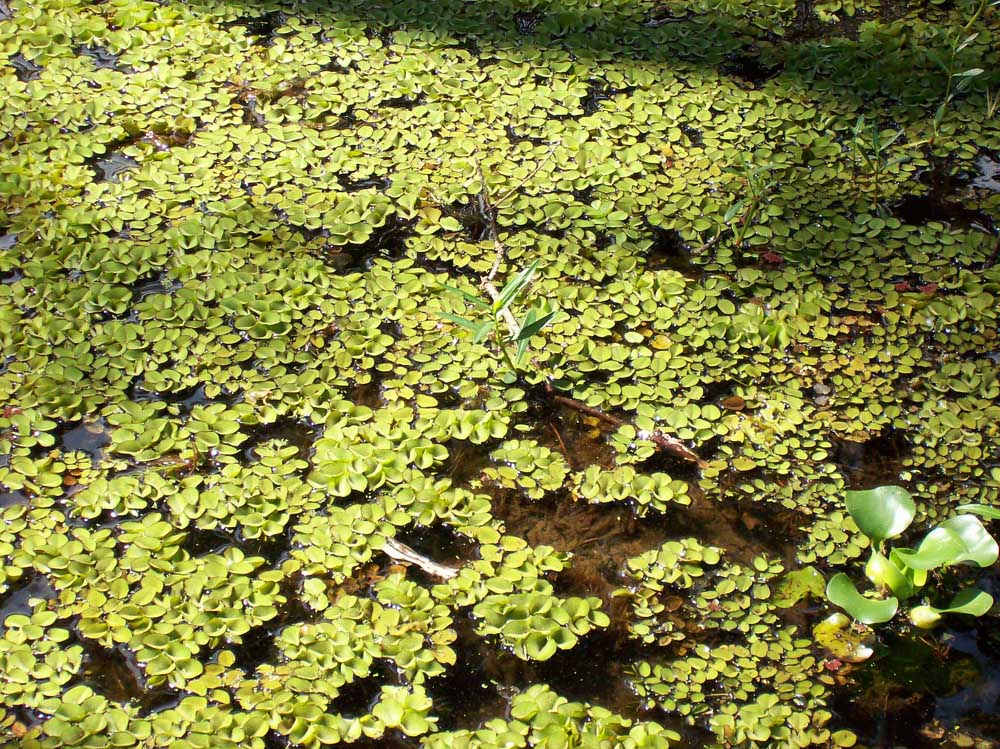Area boaters have to look for salvinia, to stop its spread
Published 12:19 am Saturday, March 31, 2018

- Giant salvinia continues to show up on lakes in East Texas. It is moved from one reservoir to another by boaters and, once it gets established, it can shut down access to fishermen and recreational boaters. (TPWD/Courtesy)
On the heels of its discovery on Lake Palestine and again on Lake Fork, it was disheartening to read about the discovery of giant salvinia on Lake Athens and Lake Nacogdoches in recent weeks.
It was probably inevitable but still disheartening.
Giant salvinia is here to stay on Texas lakes and it is only a matter of time before it is everywhere. Those who will pay the most are going to be property owners and fishermen because the plant does best in shallower, stagnant waters like coves and creeks.
There is no other way to describe the impact of giant salvinia when it comes to recreational use, other than it is the worst man-made disaster to hit Texas lakes ever. Nothing can live under the floating fern and there is no way to boat over it.
At its worst, it has closed down more than a quarter of Caddo Lake, some areas for years now.
When it comes to a lake near you, there is no one to blame but boaters. The Texas Parks and Wildlife Department has for years warned boaters to clean vegetation from their boats and trailers at the ramp and to wash them before going back onto the water, but it has not stopped the spread. That much is apparent because in almost every case, salvinia is first found on a lake around a boat ramp.
The problem with giant salvinia is that it thrives in Texas’ climate and is difficult to eradicate even with chemicals because it doubles in mass every 10 days. That means a single acre of giant salvinia could theoretically explode to more than 2,000 acres in just 12 weeks if left untreated and that much suitable water exists. Fortunately, outside of Caddo and portions of Toledo Bend and Sam Rayburn, there are few lakes in East Texas with that much water in an individual cove that can grow salvinia. But there are a lot of places, like the north end of Lake Palestine, where it could pop up. Besides the absolute difficulty of getting around to treat places like the Neches River and Kickapoo Creek on Palestine, TPWD only has a limited amount of money and staff to address the issue.
“My budget is a little over $1.5 million annually. We have to prioritize where we focus our efforts and whether we use contractors or spray ourselves. We typically contract out the bigger jobs such as Caddo and Toledo Bend and do the smaller ones in-house,” explained John Findeisen, TPWD’s aquatic habitat enhancement team leader. Currently, herbicide treatment costs about $50 an acre.
The funding comes from state monies provided by your tax dollars through the Texas legislature and the federal government. State funding is guaranteed through 2018-19.
Giant salvinia has been found on more than 20 lakes in the state since it was first discovered on Toledo Bend in 1998. Despite education efforts, the problem seems to be getting worse. Since 2017, salvinia has been discovered on six new lakes — Athens, Fork, Martin Creek, Murvaul, Nacogdoches and Palestine, all within relatively close proximity to Tyler.
Because of where it was found on Lake Athens, there is a good chance it can be eradicated this time. That is not the case on Fork or Palestine, where containment may have become the best hope.
So far it has not been found on Lake Tyler, but it is only a matter of time. If it does show up and not eradicated quickly, it could become a real problem.
“I would be more concerned about Tyler than Athens due to the marsh above the Highway 64 bridge. That is optimal salvinia habitat and would be much more difficult to treat,” said Richard Ott, TPWD Inland Fisheries biologist.
Homeowners who complained about hydrilla will beg for its return if salvinia gets established in residential coves on the lake.
Fishermen are already on the move with tournaments on area lakes and it won’t be long before the recreational boating season is underway. The only way to prevent the expansion of salvinia to even more lakes is for boaters to take a couple of minutes to clean their rig before leaving the ramp and make sure it is clean before launching at another lake.
The public is being asked to keep an eye out for salvinia on lakes across the state. Anyone who spots the plant should call 409-698-9121 or email aquaticinvasives@tpwd.texas.gov.






